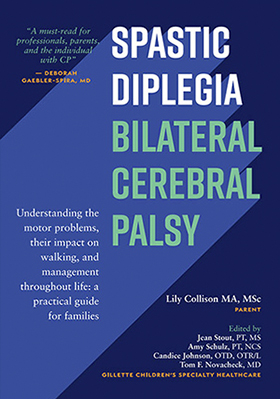Muscle tone is the resting tension in a person’s muscles. A range of “normal” muscle tone exists. Tone is considered “abnormal” when it falls outside the range of normal or typical. Abnormal muscle tone occurs in all types of CP. Spasticity is defined as an abnormal increase in muscle tone or stiffness of muscle, which might interfere with movement, speech, or be associated with discomfort or pain. Other definitions highlight the velocity-dependent nature of the condition. In a person with dystonia, sustained muscle contractions cause twisting and repetitive movements or abnormal postures.
Tone reduction is a high priority in the early years. However, tone reduction is only one part of the integrated treatment by the multidisciplinary team. It is usually performed in conjunction with other treatments such as PT, OT, serial casting, and orthoses. When tone reduction is included with other treatments, the effects of each treatment may be amplified: the combination of treatments may be more effective than any one treatment on its own.
Reducing spasticity helps reduce the harmful effects of high tone on skeletal growth. It also helps reduce stiffness and increase the overall ROM (range of motion) of joints, thus increasing the ROM the person can move through. It facilitates strengthening, working on motor control, balance, and other functional goals. It can also improve a person’s tolerance for wearing orthoses.
The following table lists five types of tone reduction treatments.
| Treatment | Generalized or focal | Reversible or irreversible |
| Oral medications | Generalized | Reversible |
| Botulinum neurotoxin A (BoNT-A) injection | Focal: injected into muscles | Reversible |
| Phenol injection | Focal: muscles controlled by the injected nerve | Reversible |
| Intrathecal baclofen (ITB) | Generalized | Reversible |
| Selective dorsal rhizotomy (SDR) | Generalized | Irreversible |
Generalized = treatment affects a large region of the body. Focal = treatment has an effect on a local area (e.g., a single muscle). Reversible = the effects of the treatment are not permanent.
Many centers have special team evaluations of spasticity because of its complexity and significance in CP. At Gillette Children’s Specialty Healthcare, a spasticity evaluation involves several professionals together at a Spasticity Evaluation Clinic. There, members of the multidisciplinary team include professionals from physical medicine and rehabilitation (PMR), orthopedics, and neurosurgery. The specialists see the child together, not individually, and come to a consensus opinion on the best spasticity treatment for the child. The evaluation includes a gait analysis and functional PT assessment completed as part of the (typically) two-day evaluation. Spasticity clinics at other facilities may include additional team members from other specialities including neurology, developmental pediatrics, and rehabilitation therapy.
Different institutions have different protocols for how they perform each tone-reducing treatment. For example, the selection criteria (those for whom the treatment is suitable) and protocols (how the treatment is actually carried out) for SDR were found to vary between institutions. This is why SDR is not a uniform procedure. (Indeed, this point applies to all treatments.)
As with all treatments, clear goals for both treatment and assessment of outcome after treatment are required. Because the child has to readjust to their new, relaxed muscles, they may initially experience weakness or loss of function. Though the use of tone reduction peaks in early childhood, it can continue into adolescence and adulthood.
No one treatment meets every child’s needs, which is why a range of tone-reducing treatments exist. Tone reduction to manage spasticity (and dystonia, if present) is tailored to the individual child’s needs. Which treatment is recommended depends on many factors, including age, GMFCS level, and type of high tone. An individual child may receive different treatments as they grow. For example, they may start with BoNT-A and then undergo SDR in later childhood when their gross motor function is more mature and their ability to participate in rehabilitation has improved. Some tone-reducing treatments (such as SDR and ITB) are only available at specialist centers. To be able to choose the most appropriate treatment for each individual child, access to the specialist center to supplement what is available locally is needed. Though the use of tone reduction peaks in early childhood, it can continue into adolescence and adulthood.
This is the current situation with regard to tone-reducing treatments. As with all areas in the management and treatment of CP, best practice may change as more research emerges.
I’ve written separate essays on each of the five tone reduction treatments: Oral medications, Botulinum neurotoxin A (BoNT-A) injection, Phenol injection, Intrathecal baclofen (ITB), and Selective dorsal rhizotomy (SDR).
Useful web links
- Gillette Children’s Specialty Healthcare (2014) Spasticity Treatment Options for Cerebral Palsy. youtu.be/ejgnqoelW6A
- NHS National Institute for Health and Clinical Excellence (NICE) (2016) Spasticity in Under 19s: Management. [online] nice.org.uk/guidance/cg145
The above is an extract from Spastic Diplegia–Bilateral Cerebral Palsy available here.


